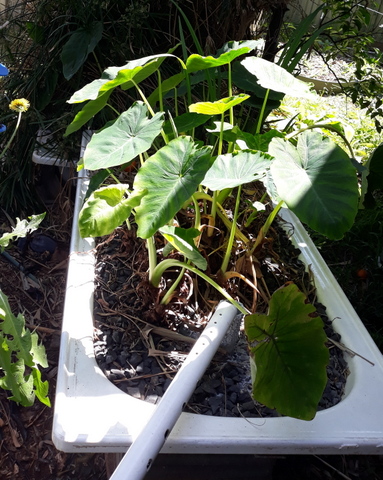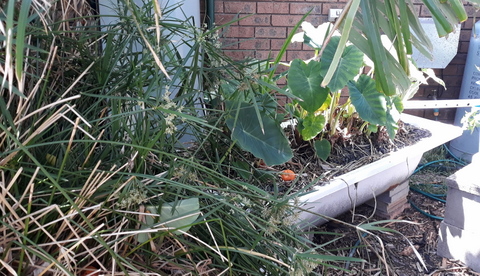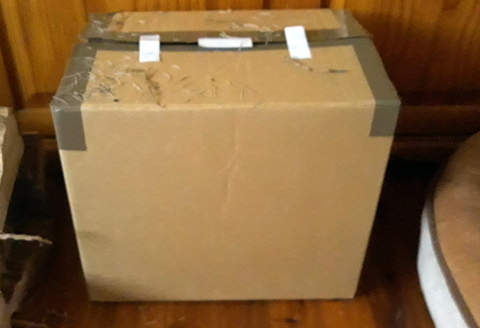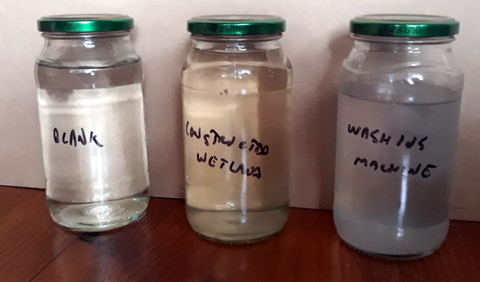Our constructed wetland has been in and operating for about 5 years, we put water from the washing machine in one end and then use the water that comes out the other for watering some trees and things. But was the water really any cleaner? About six months after it was commissioned I took up the offer of a friend of mine who has access to water analysis stuff to do a ‘before’ and ‘after’ check on the grey water as it went into and out from the constructed wetland, and in fact it did make a difference. The results of those tests are recorded here.


It must be said though, that was almost 5 years ago. Was the constructed wetland still functioning as intended? I don’t have access to water analysis facilities so I just had to take it on faith. That was up until a week ago.
I was doing some reading (as you do) and by chance found a method of checking the performance of a constructed wetland, that could be done at home and at no cost. The results will not be numbers, but would give me an idea if the effluent from the constructed wetland had improved at all from what was going into it. The test was also reproducible and so easy I could do it again at any time.
For those playing at home, the source of this wonderful information was “Toolbox for Sustainable City Living” by Scott Kellogg and Stacy Pettigrew, published by South End Press back in 2008.
The idea behind the test is that the water coming out the end of the constructed wetland should look more like clean tap water than the wash water going in. To conduct the test I needed to take a water sample direct from the washing machine output, a water sample from the output of the constructed wetland and a sample of tap water to act as a blank for the test. I then had to keep them all in the dark for a week and see what they look like at the end of that time.

While they don’t specify, I thought it best to use three bottles of the same size and type. I filled and labelled each bottle and then placed them in a cardboard box, which I then placed in the lounge room, mainly because it is winter here and I didn’t want the samples to get too cold just in case it inhibited any of the biological effects.

Anyway, after a week I pulled the samples out and in fact the sample from the end of the constructed wetland did look much more like the blank than the stuff coming out of the washing machine, so it seems that even after 5 years (and in the middle of winter) our constructed wetland is still doing its thing!



